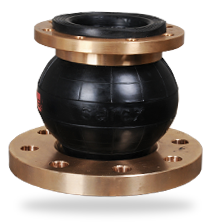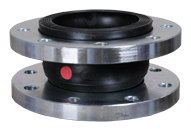RUBBER EXPANSION JOINTS
| Technical Features |
|
| Pressure |
PN16 |
| Temperature |
100 °C |
| Nylon Fibers |
Kord Bezi |
| Flange Material |
Çelik St 37,2
GGG 40,3 |
| Rubber Material |
EPDM
NR (Opsiyonel)
BUTYL (Opsiyonel)
NBR (Opsiyonel) |
| Expansion |
Eksenel +15 mm -20 mm
Yanal 15 mm
Açısal 10° |
Rubber Material Properties |
| NR |
Corrosive materials, Waste Water, Sludge, Waste Oil Emulsions, Calcium, |
| EPDM |
Hot Water, Salt Water Cooling pore, chlorinated solvents, esters and ketones, |
| NBR |
Petroleum-Based Products, Compressed Air, Natural Gas (Except LPG), high-octane fuels and aromatic hydrocarbons and up to 50%
Fuels containing methanol, Cooling Water Circuits, Etching Effect of Oils with. |
|
  

|
|
Maximum Pressure Resistance: Rubber expansion joints because of the chemical composition of metal forming and shaping technique is excellent because of the explosion pressures 40g/cm2 or 10 kg / cm 2 used in the normal internal pressures. In addition withstand 700 mmHg, such as vacuum suction and pressing the pump systems
elemalarıdandır indispensable.
Maximum Temperature Resistance: Rubber kompanssatörler have superior heat-resistant structure.
Because of this feature can be used with hot water systems.
Minimum Vibration and Sound Rate: Rubber kaompansatörleri very soft due to the skeletal structure are isolated from each yündeki vibration and intense tones, noise, prevent formation.
Other Advantages: Temperature variations of the elongation and shortening absorb, compensate lateral and angular movements. Vuruntusunu absorb water and prevent water hammer. Pipelines can be easily mounted to the rotary flange.
In addition, each level of pressure can be equipped with the appropriate flanges. Gasket and salmasta required.
Applications: Air conditioning, ventilation systems, sanitary installations, air compressors, pipe lines, sewer and drainage lines, suction pumps and bsma blades, hot-air lines, industrial plants, power equipment, marine systems
|
|
